
Kuya J Restaurant opened their space just recently at SM City Cebu with a beautifully thought out interior design that exudes home comfort with a modern edge. It is ideal for family lunches and dinners or eating out with barkadas and work teams.
But is the food good? I should say yes, in fact, this post lists the top ten that I personally loved and would want to order again when I visit the second time. Think of traditional Filipino comfort food that we’ve come to know and appreciate. And there are stand outs that will impress you right away.
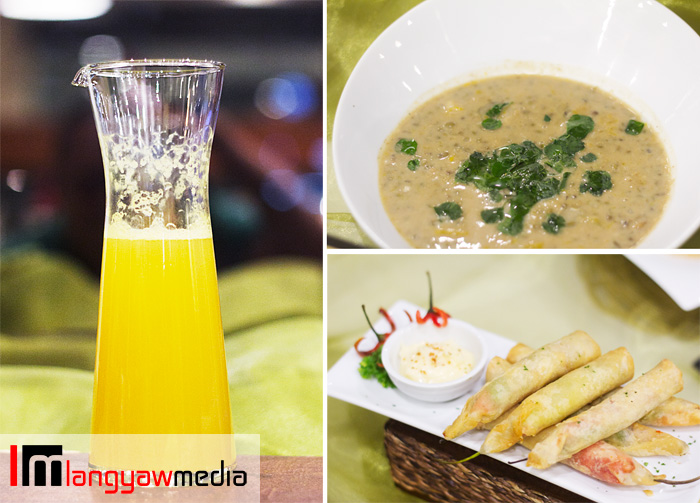
#1, #2 and #3: Ginataaang monggo, chorizo dinamitas and dalandan beer
Ginataang monggo
Hot and hearty soup and because it is ginataan (with coconut milk), a plus for this humble dish! Cebuanos are fond of this, and I’m no exception. Their take? Just like homecooked monggos that’s not watery and not too salty. I can always have it in two ways: eat it like any other soup dish or spoon several over hot plain rice. With malunggay bits, it spells H-E-A-L-T-H-Y.
Chorizo dinamitas
Dynamites or stuffed chili pepper has been a rage a few years ago and Kuya J has put a twist to it. Sili espada, a long green pepper whose length and form is akin to a sword (thus espada, Spanish) is stuffed with sweet Cebuano chorizo (a local sweet and fatty sausage) and wrapped with lumpia wrapper.
At first, people would think that it is pepper hot but this variety is tamer than the sili labuyo, small pepper variety that packs a punch in the hotness department. Bite into one and feel the crunchy lumpia wrapper, the hint of peppery hotness followed by the delicious sweet taste of chorizo! It’s a winner!
Dalandan beer
No, its not beer made from dalandan (a kind of citrus that is seasonally abundant in the Philippines) but more like dalandan flavored beer. At first, I said to myself, ah, just another novelty but little did I expect to down three glassfuls!

#4 Lumpia presko
Simply put, fresh lumpia. Actually, I was a bit disheartened to see that, being a Cebuano based restaurant, they used sweet peanut-garlic brown sauce which is traditionally Tagalog (from Luzon), probably due to the fact that their chef is one. Traditional Cebuano fresh lumpia sauce is garlicky white with no peanuts. And that is what I really love.
But anyway, I just love the lumpia! Strips of heart of palm (ubod) wrapped with malunggay leaf infused soft wrappers, thus the greenish tinge, was just too good to pass and complain about the sauce. Unlike other lumpias wherein its more of the soft wrapper than the filling, Kuya J’s is staggered with the ubod filling and daintily wrapped.
The plating is even wonderful: fresh lumpia cut into two with one over the other and topped with alfalfa sprouts, sauce on a soup spoon with crushed and minced peanuts at the side. The first time I saw this one on the display table, I was already salivating.

#5 Tokwa’t baboy
Kuya J’s isn’t technically a Cebuano restaurant that’s why Filipino dishes from other regions are also present. But I’m not complaining. The iconic tokwa’t baboy, usually served in the Tagalog region, specifically Southern Tagalog, in carinderias (traditional Filipino home diners) and bar joints as pulutan (beer chow) is elevated in this restaurant.
Pan fried tofu (tokwa) and slices of pork (baboy) are piled on top of each other forming a pyramid on a shallow bowl, topped with hair thin strips of scallions and drizzled with tuba (undistilled coconut wine, but not coconut vodka) soy sauce. I just love the crispiness of the tofu and pork as well as the tanginess of the soy sauce.
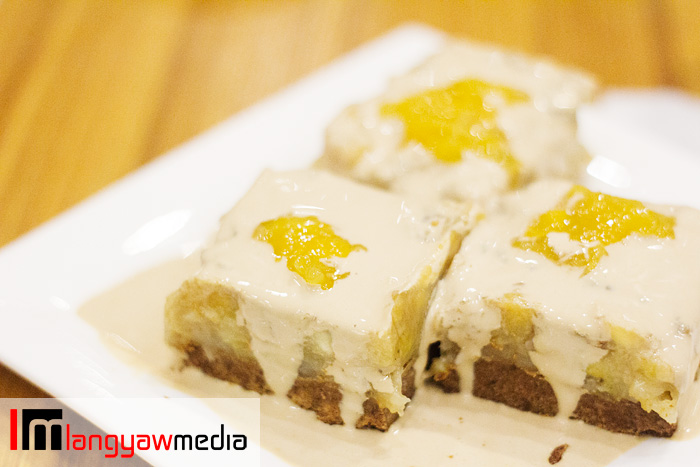
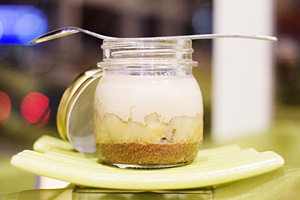
#6 Banoffee saba
Served in jars, one has to do the kuot-kuot to enjoy this dessert. Kuot means to get something from a receptacle which can be inside a pocket, a glass or a jar, just as one eat from a tall glass of halo-halo wherein you almost scrape the bottom for the sweet morsels inside, thus, this is also what you do with this dessert.
But its a wonderful dish: ripe saba, a variety of banana popularly cooked as dessert or as part of a dish, mixed with sweetened jackfruit over a bed of crushed graham crackers then topped with coffee sauce. It’s really a simple dish that I didn’t expect to be that good that I was scraping the last few leftover sauce too.
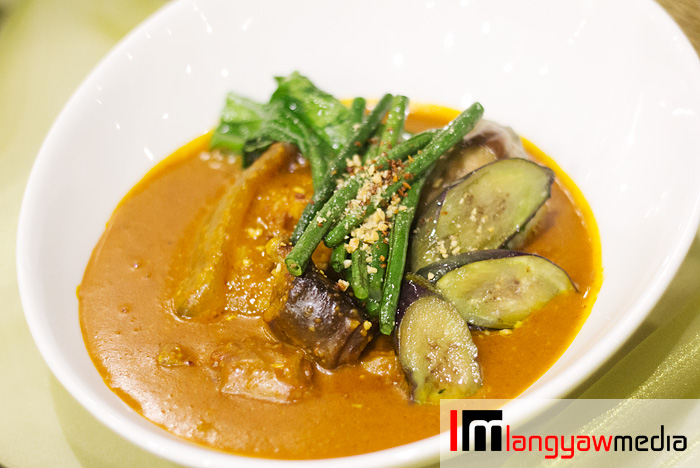
#7 Kare kare
A popular regional dish that has made inroads into the national consciousness as one of the top Filipino food. A good kare kare is actually bland with a hint of peanut which is carried out in the sauce. You mix in bagoong (fermented shrimps) for the saltiness but I do like the sauteed sweet-salty variety.
But with Kuya J’s? At first, I was not sure if it was kare kare as the sauce was already rich and tasty in itself. There was actually no need or just sparingly need the bagoong. The sauce is heavy on the peanuts but then, when I got into the meat, and wow, I was bowled over.
Delicate. Soft. The skin was gelatinous, almost melting in my mouth. The muscle tissues, tender. It was one of the memorable dishes that I had when I dined at this restaurant. The meat’s wonderfully cooked that it all made up for the shortcomings.

#8 Baked scallops
This dish can be found in almost every Filipino restaurant. It’s popular and the best that I’ve tasted was at the scallops capital of the Visayas, served at a resort in Isla Gigantes Norte. While some don’t really cook it good, Kuya J’s was an exception.
Kuya J’s baked scallops is a signature dish that is well loved by patrons and easily runs out during the day. The difference with other restaurants: buttery goodness and sweet, tender scallops which I assume are really fresh. Some guests, I was told, order one for themselves, even if they’re with a group.

#9 Tablea flan with coffee syrup and cream
If you only have one choice for dessert here in Kuya J’s, then you just have to get this one. Forget about the leche flan or, similarly, the tocino del cielo. It’s time to have some welcome change. The dessert sure looks small (because it really is, which is a shame) but a slice of the dessert spoon, a bite into it and you would forget, for a moment, that you’re not in paradise.
Velvety. Smooth. Creamy. Sexy and almost illicit. You can use these adjectives to describe this wee dessert. I just can’t forget how the softness of the flan cavorted with my tongue. It was so sensual that I can only close my eyes and surrender. Batangas tablea (100% rich chocolate medallions made from cacao beans) with toasted desiccated coconut shavings and broken barquillos. Its a play of texture. Too bad, its served small.

#10 Crispy pata
The piece de résistance! Say Kuya J and one dish comes to mind: C-R-I-S-P-Y P-A-T-A. It’s the most popular dish in the menu. Hands down, this is one of the best I’ve tasted. Delicious, crisp and thin skin, soft meat, less fat. There’s no pretense in its meat but pure cholesterol and artery clogging joy that only a good crispy pata can give.
If you haven’t tasted this in Kuya J, you miss out on one of the best there is.

Of course, there are other food other than those mentioned above. The sinuglaw was just right: tangigue slices and grilled pork. Although I found the crispy catfish just okay, most of my table mates really loved this one. The pochero tagalog is one of the restaurant’s signature dish but, probably because my roots are in Cebu, I do prefer the Cebuano pochero, although this one is also good.
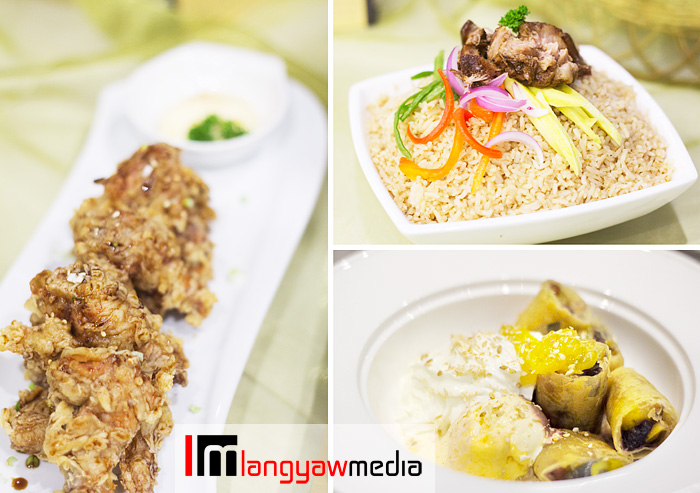
The humbagoong rice (humba + bagoong), I would have wanted it to have more bagoong for a better oomph specially that it has strips of green mangoes. The fried halo-halo ala mode, although kind of a novelty for me, might not appease diners. It’s not only the different approach but its more like turon filled with halo halo ingredients. The chicken tagudtod was also good. If I made a top 11 list, this would have been included.
Kuya J Restaurant
G/F SM City Cebu
Cebu City
Kuya J SM Cebu – (32)266.8600
Kuya J SM Consolacion – (32)266.8188
Kuya J Escario Branch – (32)260.2991
that was one fiesta we had! hahaha… they really have good food.
The best crispy pata in Cebu I’ve tasted. Have you? 10 top dishes you should try at Kuya J’s http://t.co/TED79tLPSE http://t.co/nUmzSpCmlg
The best baked scallops n Cebu I’ve tasted. Have you? 10 top dishes you should try @ Kuya J’s http://t.co/0xu5gewyIj http://t.co/csTna9zpTF
OH my! That makes me drool right now. O_o
after crispy tadyang and suman+mangga+tsokolate of Kuya J, we will try Tablea flan with coffee syrup and cream… http://t.co/ChalrGPKJA